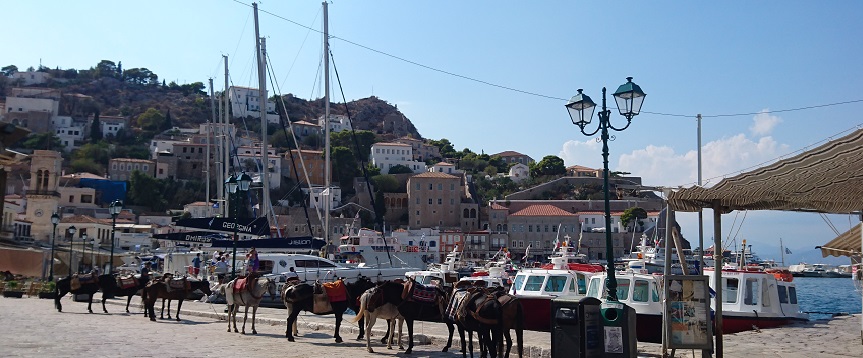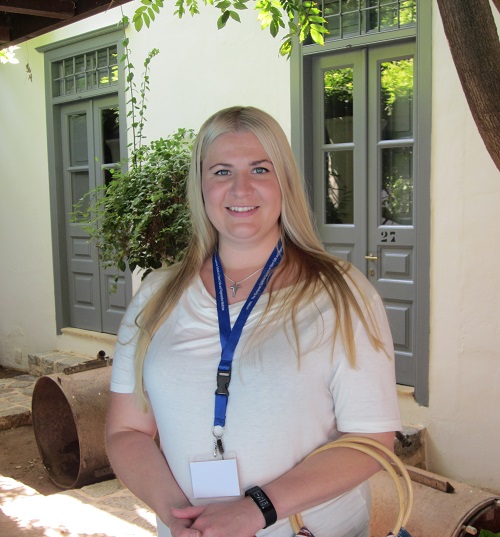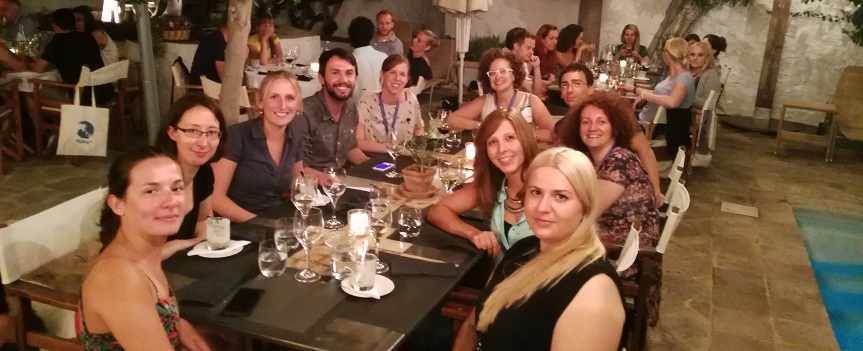HYDRA XII The European Summer School – unique training course on Stem Cells and Regenerative Medicine

Months after the end of the summer school, my inspiration, motivation and smile-inducing memories are still there, on the island of Hydra.
I remember the day when I found out that I was selected to participate in the 12th European Summer School on Stem Cells and Regenerative Medicine, held in Hydra, Greece, from 11-18 September 2016. That day, I was the happiest and luckiest person in our lab, and my whole world lit up in the brightest colours. 
Hydra is one of the Saronic Islands of Greece, located in the Aegean Sea. The island is unique in its architecture and lack of transport (the only transport is by donkey). As I reached the port, the beauty of the island unfolded in front of my eyes. I saw a picturesque landscape with transparent blue seawater, a rocky seashore, simple stone houses and lots of boats. At that moment, I thought, ‘What a stunning, lovely place to study!’
The first meeting of the summer school participants and faculty was a bit scary for me, but I soon joined in. I was really amazed at how the lecturers were lovely, approachable and easy to communicate with. I have the greatest respect for them.
The summer school began with an introduction about what a stem cell is. It is quite funny that we, the students, were quite surprised and confused. After all, it is a pretty simple textbook fact, but not as simple as we thought. But I think it was to encourage us not to be afraid to respond and interact. After a short introduction, the plenary lecture by Dr Connie Eaves began. She shared her ideas about what is important in the research field. She highlighted that we should be passionately interested in our field, look for novel ideas (or methods), new investigative possibilities, definitive answers, and be realistic.
After this, we had a wonderful dinner. During that dinner, I not only tasted Greek dishes, but I also learned some important things relevant to my PhD work while I was just listening and talking to my neighbours at the table, Sally Lowell, Sarah Chan and Steve Pollard. We talked about different kinds of stem cells, what could be interesting and useful to research, which cells are used in clinics, and so on. It was relevant to me to learn about some of the manipulation techniques/methods to get a better, more effective cell. I am currently working with enucleated mouse bone marrow ‘mesenchymal stem cells’ and skin keratinocyte cells. I am searching for a more effective way to close pathological skin wounds and for a better way to stimulate migration of the cells. How marvellous it was to gain knowledge through a simple conversation with experts. Amazing!
The next six days’ lectures were divided into three main sections within stem cell biology: 1. Paradigm Stem Cell Systems; 2. Regulation and Dysregulation: a) Regulation of cell identity & fate decisions in vivo and in vitro, b) Degeneration, regeneration & cancer; 3. Realising the promise.
In the first main section, experts presented on different tissue stem cells, including epidermal, intestinal, muscle, skeletal and neural stem cells. I was really excited to listen to all of the speakers and learn new information about stem cells, but I would like to highlight Pam Gehron Robey’s lecture, because it is related to my PhD thesis. I am working with mouse bone marrow mesenchymal stem cells, but since Dr Robey’s lecture, I have decided no longer to simply use the term ‘mesenchymal stem cells’ (MSC) in my work. Why?
Dr Robey’s lecture was about the definition of MSCs. She explained the the term started after the discovery of cells in bone marrow by science pioneers Alexander Friedenstein and Maureen Owen in the 19th century. They noticed that bone marrow contains adherent, fibroblastic, non-hematopoietic stem/progenitor cells which are able to form cartilage and bone (multipotent cells). Since then, a number of terms have been used to describe those cells, and after a while the MSC term was adopted.
Dr Robey clarified that the wide use of the MSC term is inappropriate for a number of reasons. First, there is no one single MSC. Second, there are lineage and progenitor mismatches. MSCs can differentiate into skeletal cell types in vitro and in vivo. However, the non-skeletal potential of MSCs has not been proven in vivo. You can isolate “MSCs” from a variety of tissues, but you will not find a common ancestor for skeletal or non-skeletal tissues. Third, MSC identification challenges - there are minimum criteria to identify MSCs, and one of them is surface marker expression. However, these identification markers are not specific to all the cells currently termed MSCs and are found on other cells, like fibroblasts. The markers are not definitive and don’t provide information about functionality.
Dr Robey suggested that we should rename bone marrow MSCs to skeletal stem cells, and other tissue MSCs to tissue-specific stem cells. Because it has not yet been established whether cells taken from other tissues are similar to the mesenchymal stem cells of the bone marrow, the terminology should be based on the tissue of origin. This is important because of therapeutic claims being made about “MSCs”.
Read EuroStemCell’s fact sheet about mesenchymal stem cells.
In the second section (Regulation and Dysregulation), experts presented information about stem cell fate decisions. We were learning what is important for cells to change their fate and how to use that knowledge in cell differentiation process or in tissue formation.
In the third section (Realising the promise), experts presented very exciting and ambitious lectures – clinical research achievements. We heard about Parkinson’s disease clinical research, muscular dystrophy achievements, and skin and corneal regeneration. All these lectures motivated me to be more curious and not to give up.
Across all the sections, we also learned about the importance of ethics, especially when we are dealing with a very sensitive area, and we had the opportunity to debate ethical issues.
The ‘Inspire’ sessions focused on how to engage with the public. I realised how important it is to communicate our research to non-science audiences, and learned ways to do it. I love to talk with kids and to teach students, so it was really fun to know that there are tools and games to lighten the educational talk.
The future potential of the field of stem cell biology is really exciting. The Hydra summer school is a great opportunity to meet the stem cell experts and to gain knowledge from them. I am very grateful to the organisers for their support, and for making it possible for me to attend! I highly recommend to all students working with stem cells to get to the Hydra summer school. You will have an amazing experience!

Last updated: